Here’s a record of a banana still life watercolor class exercise. This time, I experimented with maintaining brightness while introducing subtle color variations, which turned out to be quite challenging
Below, I'll explain how to use different shades of yellow and green to paint bananas. If you're interested, follow along, and refer to the second image for better understanding.
●Banana Colors:
1. Light and Shadow Areas
The primary color of a banana is yellow. For the light areas, you can use lemon yellow or cadmium yellow as a base.
In the bright areas, use more water to dilute the yellow, making the color lighter and more transparent. See the top left color mixing square for reference.

In the shadow areas, you can add orange or a small amount of brown to deepen the shade, creating the banana's shadows. Check the top right for details.
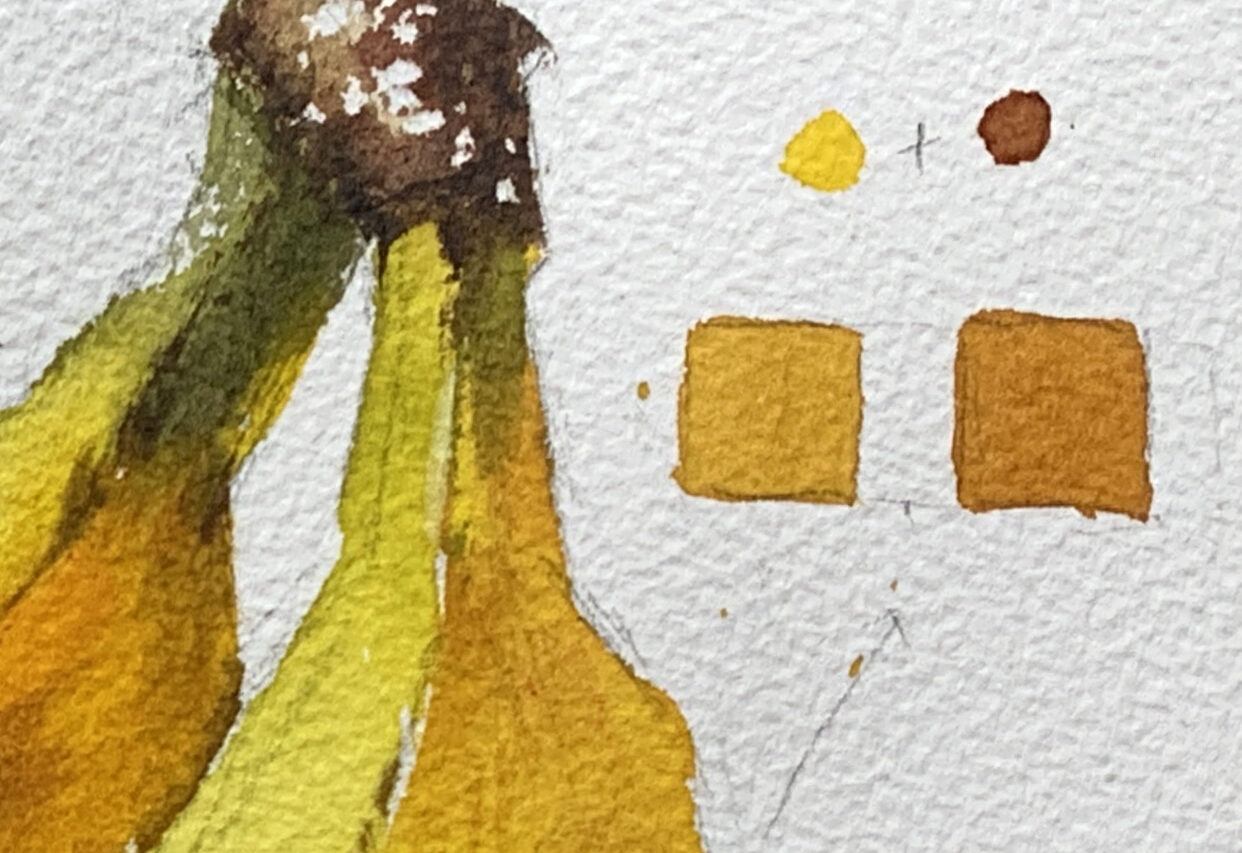
If you're curious about the differences in green that can be created using various blues, refer to the small diagram at the bottom left.
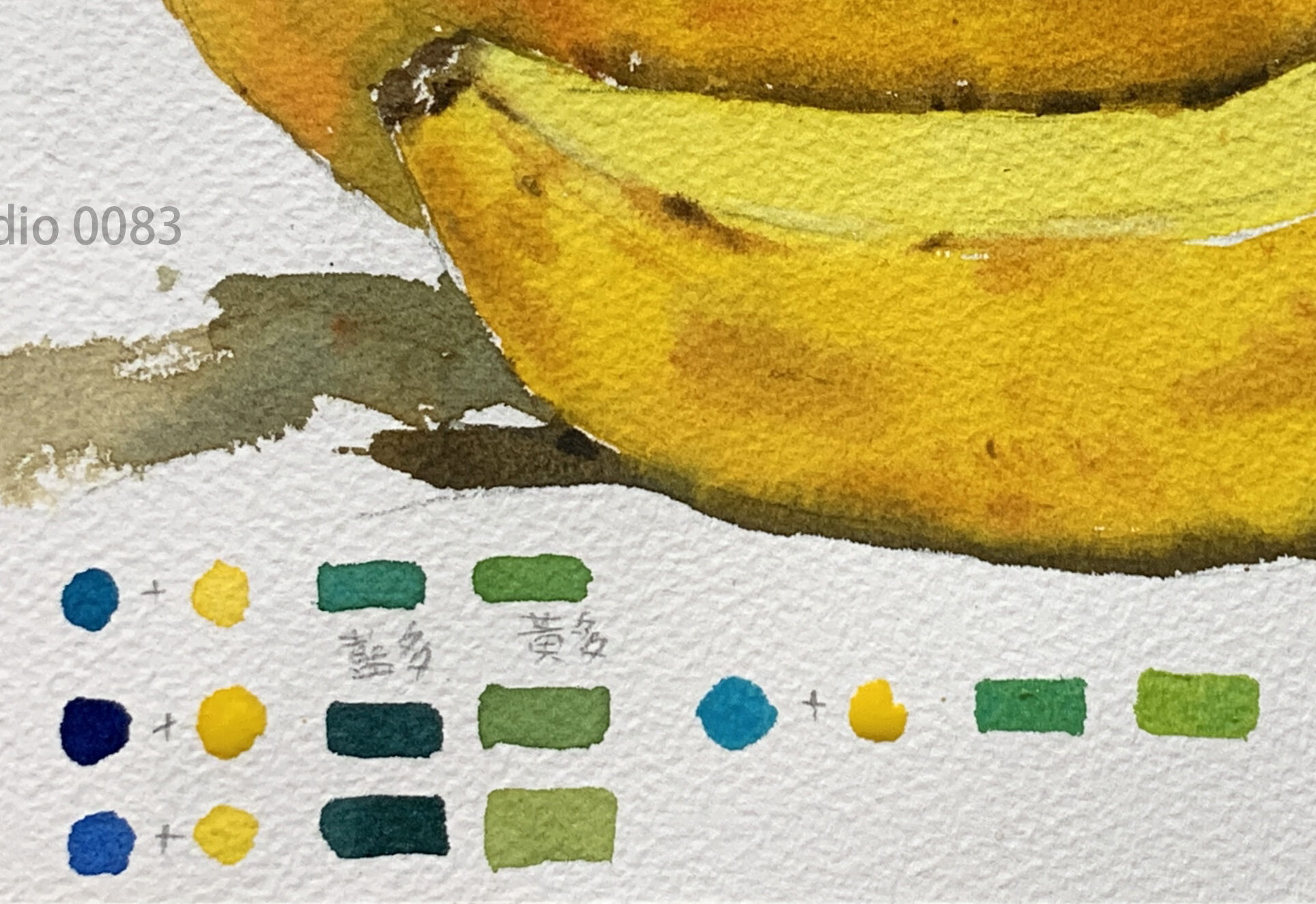
2. Water Concentration:
The depth of the color depends on the ratio of water to pigment. More water makes the color more transparent, as seen in the light areas, while less water creates more saturated, darker areas, like the shadowed parts.
●How to Paint a Banana:
1. Prepare Your Palette and Paints
The main colors you'll need are yellow, orange, and blue. Get these ready and mix them on your palette.
2. Sketch the Outline

Use a pencil to lightly sketch the outline of the bananas, paying attention to any overlaps and keeping the proportions accurate.
After finishing the shape, it's important to understand the plane structure and form transitions of the banana, as they affect where the light and shadow fall when adding color, as shown in the image below:
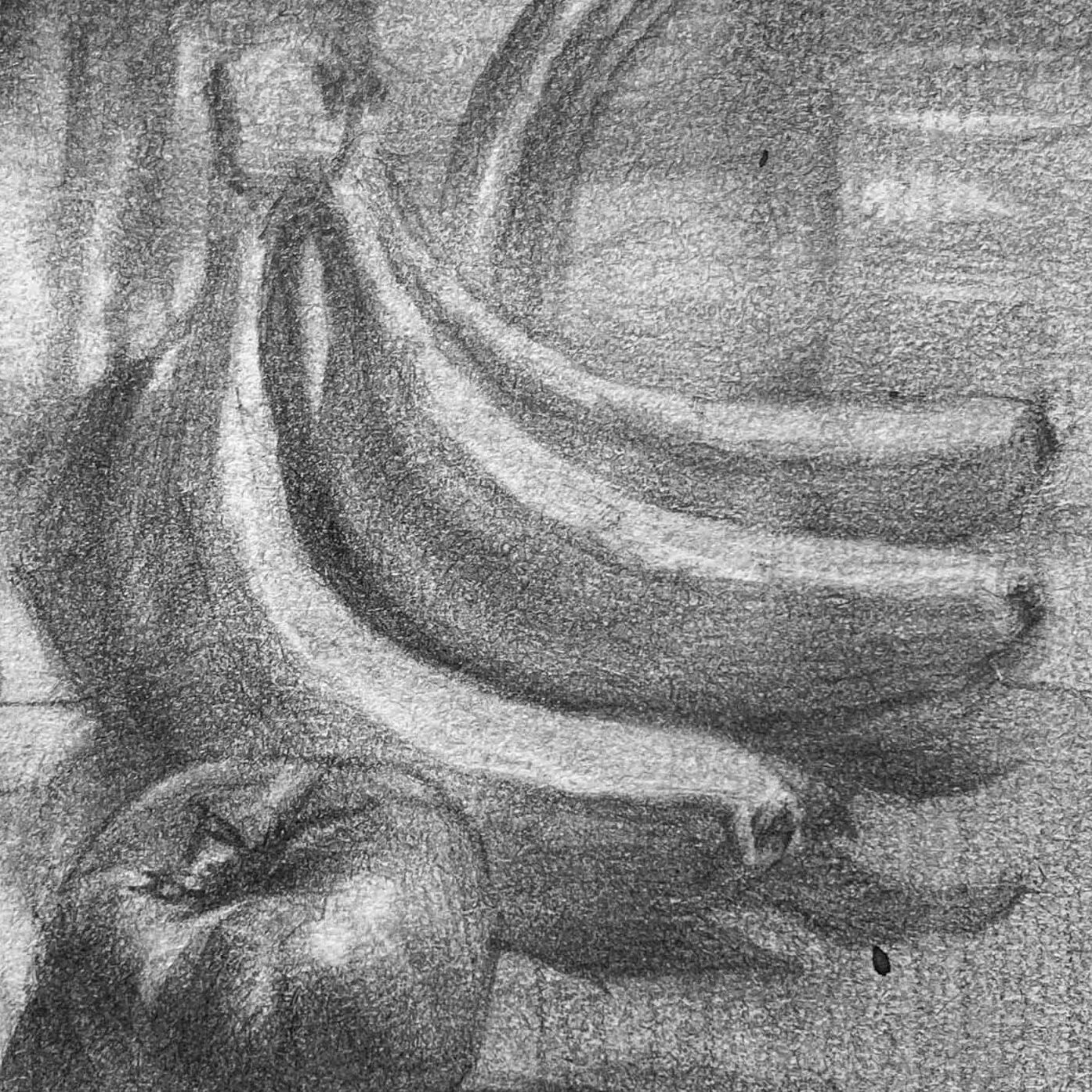
3. Start Applying Color
Mix a lot of water with a small amount of yellow and gently brush it over the light areas of the banana. This layer should be quite transparent.
Use less water with yellow and add a bit of orange to start shading the darker areas of the banana. Pay attention to the direction of the light and gently blend the shadows.
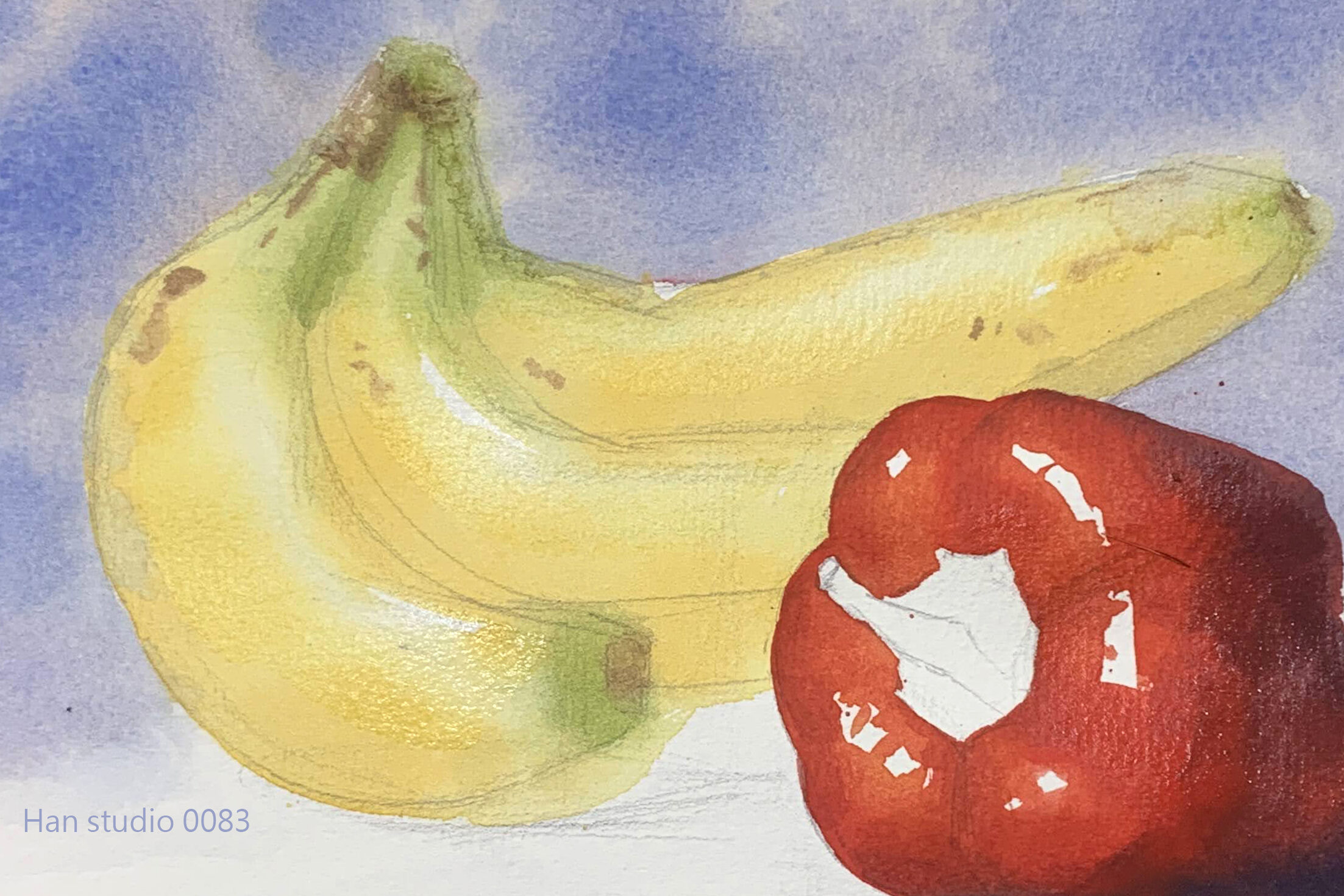
Mix blue and yellow to create different shades of green for the shadow beneath the banana.
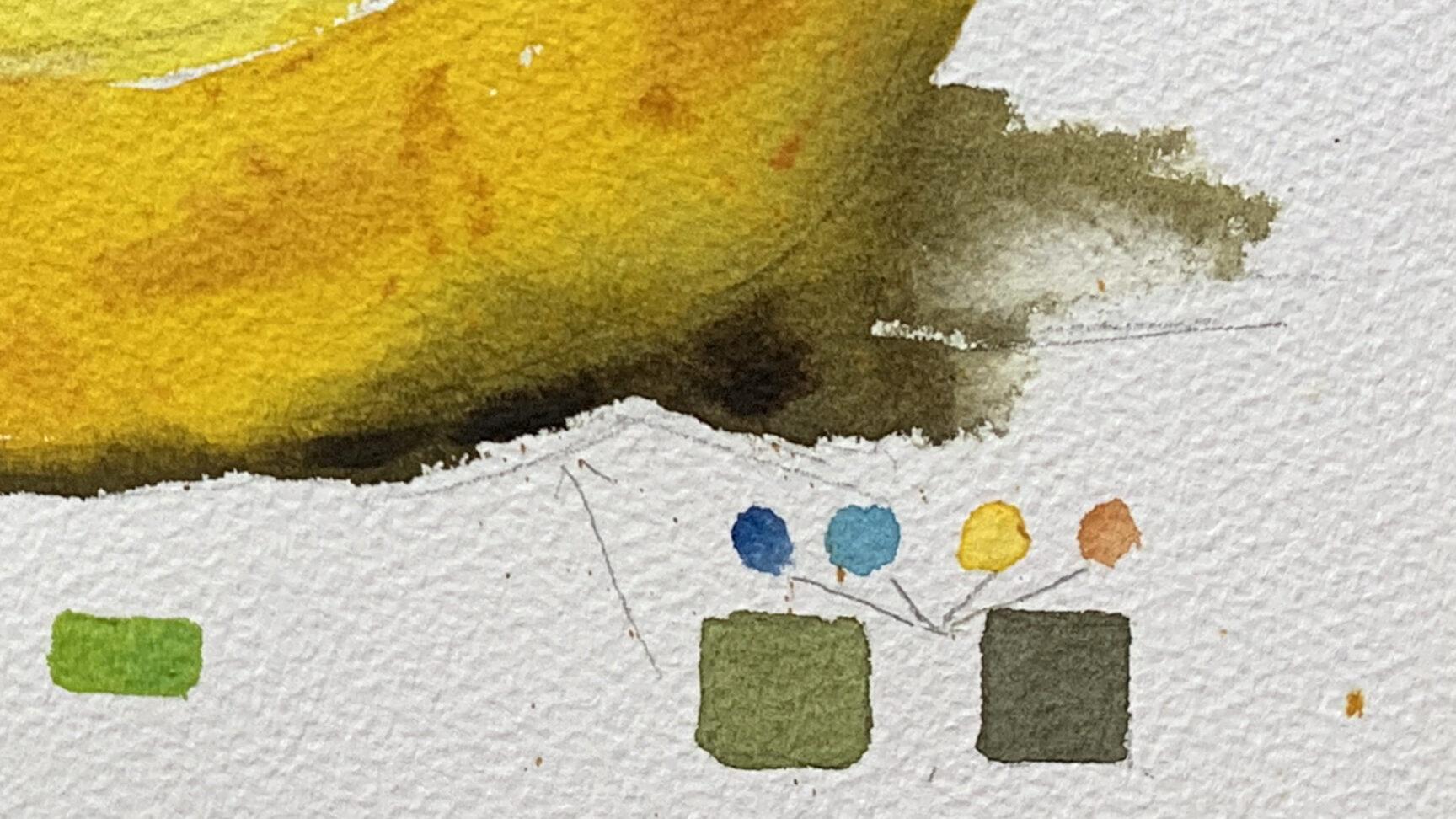
While the banana is still wet, use a stronger orange or brown to enhance details like spots and the stem. Pay attention to the water concentration each time you mix the colors, adjusting the saturation accordingly.
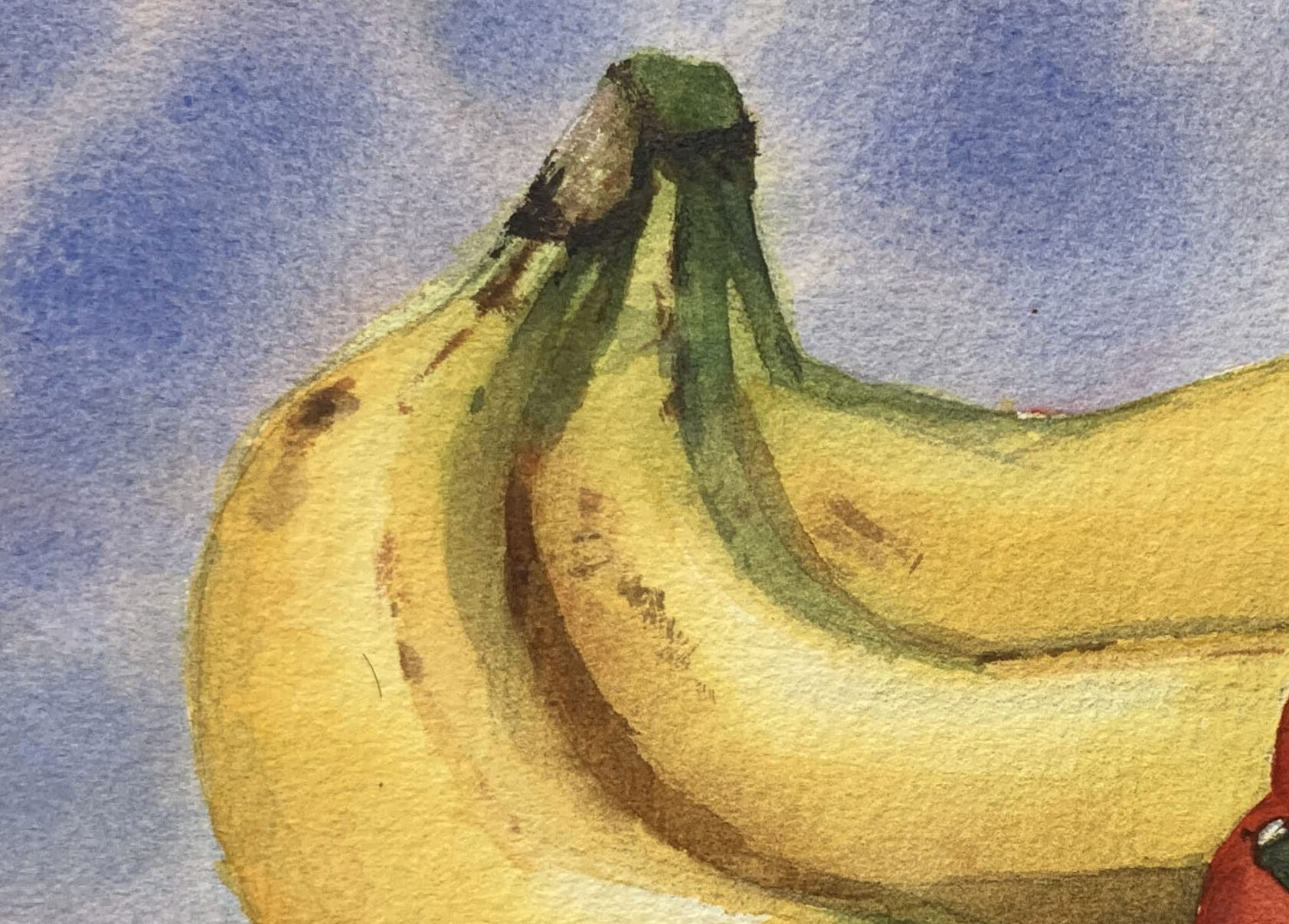
If you're interested in learning more about the relationship between color value and saturation, feel free to click on this article about how to mix paint .

I hope this guide helps you understand and grasp the colors of bananas. If there's any other topic you'd like to explore or specific painting techniques you want to learn, feel free to leave a comment or message me. Happy painting!
If you're interested in learning to draw but don't know where to start, or if you'd like to understand the knowledge behind drawing,
feel free to join my LINE and contact me. In my classes, I organize drawing methods in a clear and structured way.
Click here to learn more about my drawing courses!
Other Related Watercolor Articles:
How to Paint the Light and Dark Layers of a Monstera Leaf
How to Paint a Vibrant Yellow Bell Pepper Still Life
How to Watercolor Grapes: Master Light, Shadow & Gradients
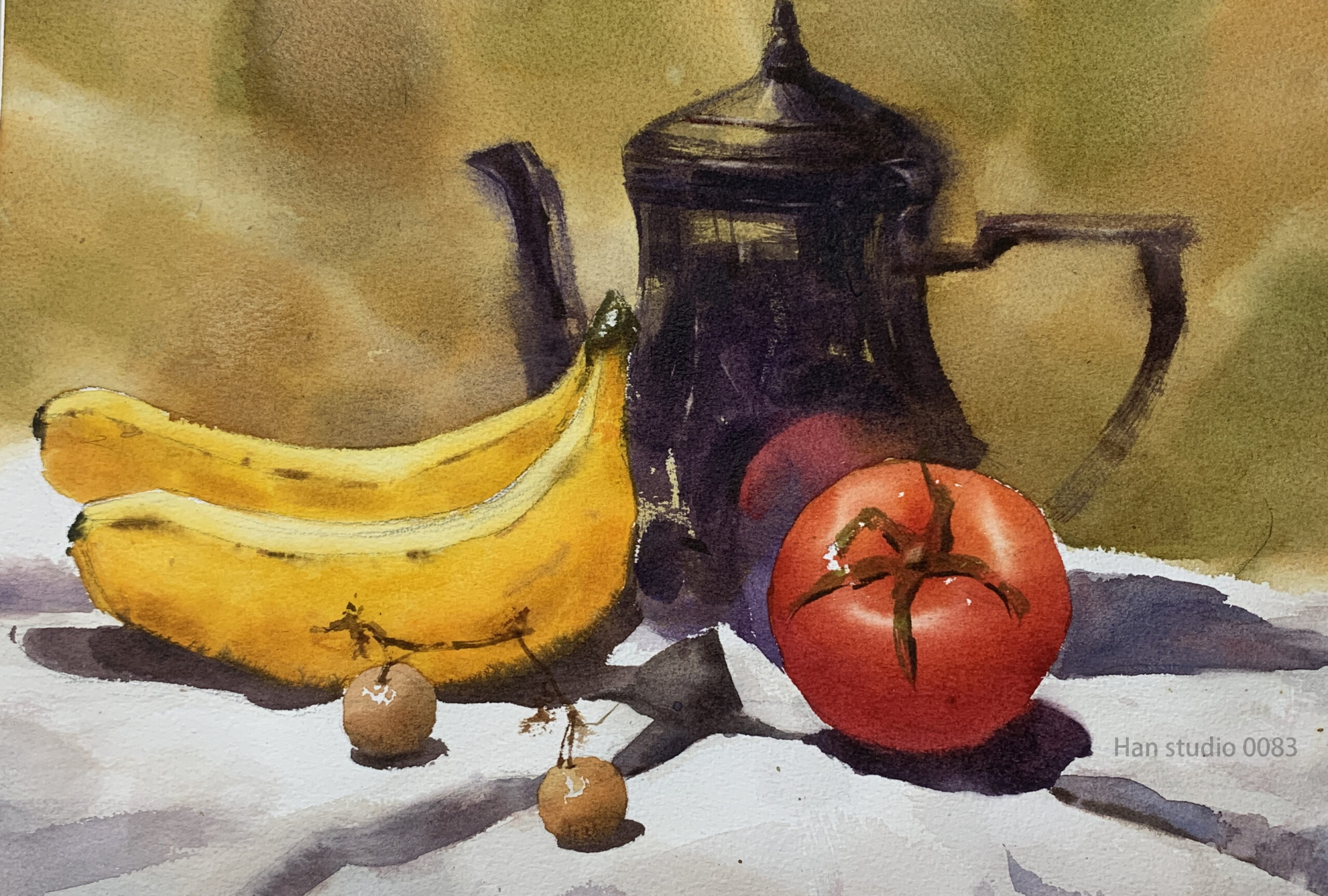

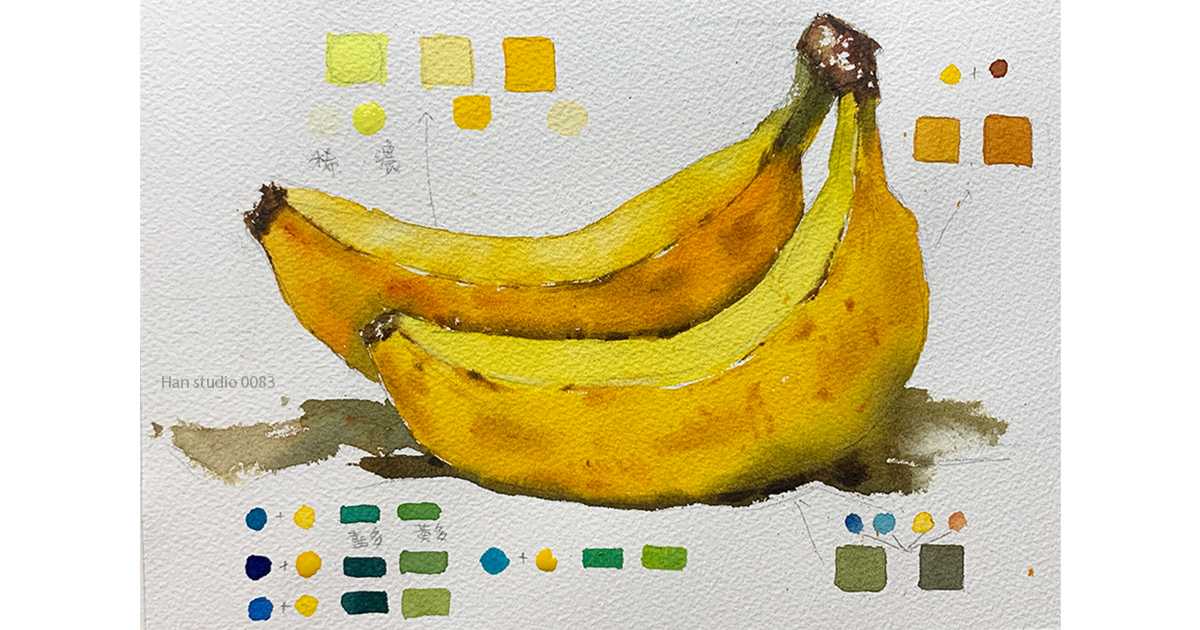


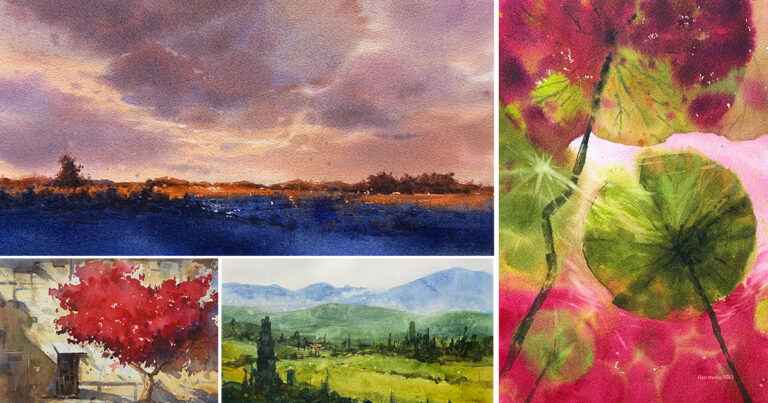
Leave a Reply